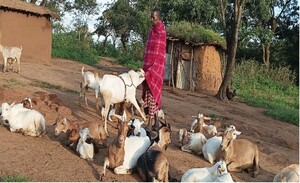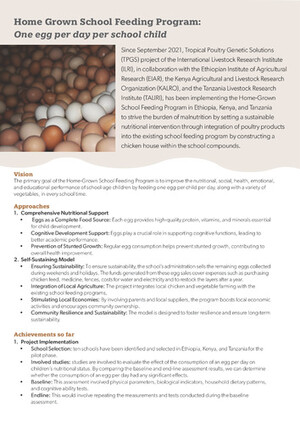
Efficiency of selection for body weight in a cooperative village breeding program of Menz sheep under smallholder farming system
Abstract
We evaluated the efficiency of selection for body weight in a cooperative village breeding program for Menz sheep of Ethiopia under smallholder farming system. The design of the program involved organizing villagers in a cooperative breeding group to implement selective breeding of their sheep. The program was jump-started through a one-time provision of elite rams from a central nucleus flock, but subsequent replacement rams were selected from within the village flocks. We also evaluated body weight trends in a village where cooperative breeding was not implemented and individual farmers managed their flocks under traditional breeding practices. Under traditional breeding practices, genetic progress over 8 years either stagnated or declined in all the weights recorded. In the cooperative villages, selection differentials of 2.44 and 2.45 kg were achieved in 2010 and 2011 selection seasons, respectively. Birth weight, 3-month weight and 6-month weight increased, respectively, by 0.49, 2.29 and 2.46 kg in the third-generation lambs over the base generation. Improved rams supplied from the central nucleus flock gave an initial genetic lift of 14.4% in the 6-month weight. This was higher than the gain achieved from selection in the village flocks, which was 5.2%. Our results showed that village-based genetic improvement in body weights under smallholder conditions could be feasible if appropriate designs are adopted and that commencing with elite central nucleus rams help jump-start village-based programs.
Citation
Gizaw, S., Getachew, T., Goshme, S., Valle-Zárate, A., Arendonk, J.A.M. van, Kemp, S., Okeyo, A.M. and Dessie, T. 2014. Efficiency of selection for body weight in a cooperative village breeding program of Menz sheep under smallholder farming system. Animal 8(Special Issue 08):1249-1254.










